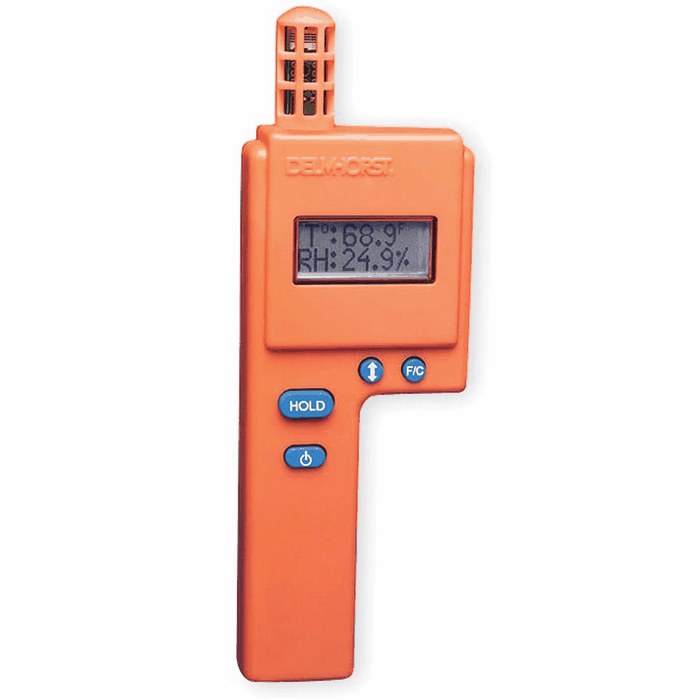Condensation can be a problem for a number of reasons. For homeowners, condensation can be an indication of excessive humidity—leading to mold growth and other issues in the home. Manufacturers specializing in wood products may need to prevent excessive condensation from affecting their wood products during production. Restoration specialists often have to control condensation in a building following a flooding event to prevent water damage from getting worse.
When working to control condensation within a structure, there are a few tools that may prove incredibly useful, including:
- Air movers
- Thermo-hygrometers
- Climate control systems
- Moisture meters
- Dehumidifiers
Air Movers
For those not in the water damage restoration industry, air movers could be considered similar to large industrial fans—albeit with a more focused area of air movement. Air movers are often used in water damage restoration to force the humid air out of a compromised structure. Other industries may use them to improve air flow in areas where air circulation is poor.
When used for restoration work, an air mover may be attached to an opening in the structure. The opening is sealed against the exterior air to ensure that the air mover is forcing the humid air in the structure out and no outside air can get in. By doing this, excess moisture in the air can be quickly forced outside—helping to reduce condensation in the structure.
Thermo-Hygrometers
There are two major factors that affect whether or not condensation will occur:
- The amount of moisture in the air; and
- The current temperature of the air.
 These two factors can be used to determine the relative humidity (RH) of a room, giving an indication of how likely condensation is to occur. Generally speaking, the colder a room is, and the more moisture there is in the air, the closer the room will be to allowing condensation to develop.
These two factors can be used to determine the relative humidity (RH) of a room, giving an indication of how likely condensation is to occur. Generally speaking, the colder a room is, and the more moisture there is in the air, the closer the room will be to allowing condensation to develop.
Thermo-hygrometers are specialized tools that can be used to measure the temperature and amount of moisture in the air to provide users with a close approximation of the RH conditions in a given area. The amount of moisture typically is registered as a percentile measurement where low numbers would be very dry air and high numbers would mean very wet air.
By using thermo-hygrometers, it is possible to track how much moisture is in the air and to make decisions regarding how to adjust the environment to control condensation.
Climate Control Systems
Many modern buildings are outfitted with some form of climate control system. The capabilities of these systems vary from one model to the next, but the most common feature is the ability to set the temperature by turning on air conditioning systems or heaters as needed.
Since the temperature of a structure affects how likely condensation is to occur within it, this makes climate control systems perfect for condensation control. If the goal is to prevent condensation, then turning up the heat can reduce the relative humidity conditions in the building—making it harder for condensation to occur and making it dry out faster.
Moisture Meters
Moisture meters are often used to make sure that wood, insulation, and other materials haven’t been compromised as a result of too much moisture. There are many different kinds of moisture meters on the market. Most of these devices can be divided into two categories:
- Pin Moisture Meters. These devices use the property of electrical resistance to measure the amount of moisture in wood and other materials. Since water is an efficient conductor, less resistance equals more water, and vice versa.
- Pinless Moisture Meters. These devices use an electromagnetic frequency to “scan” a material for the presence of water. Requires a flat, solid surface to work, but doesn’t leave pinholes in the material being tested.
Different moisture meters will have different features, such as special material scales (wood, drywall, reference) or compatibility with specially-designed electrodes for specific work. With these tools, it is often possible to directly check building materials to verify if they’ve been damaged by excessive contact with moisture from condensation in the air.
Dehumidifiers
For structures that lack a central climate control system, dehumidifiers can serve as an alternative option for controlling condensation. These devices pull in air and pass it over a refrigerated coil. The cold coil collects excess moisture in the air and forces it to condense in the dehumidifier. Runoff from this process is then collected in a reservoir, and waste heat from the cooling process is passed out of the device.
Some of the specifics of the process vary from one manufacturer to the next, but the above should serve as a basic “broad strokes” description of the process. Because the water is collected in a reservoir, the dehumidifier will need to be emptied from time to time—how often depends on the size of the reservoir and how much moisture the dehumidifier can pull from the air over a given period of time.
Used correctly, these tools can help you control condensation in a structure with ease. However, finding the right tools for the job isn’t always easy—especially when it comes to moisture meters and thermo-hygrometers. These tools are highly useful for tracking your progress on controlling condensation, but only when they’re well-made and accurate.
This is why Delmhorst Instrument Co. makes top-of-the-line moisture testing tools for professionals and amateurs alike—and then goes above and beyond to make sure that our moisture meter and thermo-hygrometer users get the most out of their moisture testing devices.
Learn more about Delmhorst by checking out the free guide at the link below, or contact us directly!

Comments